The Ultimate Guide to Cross Banded Danio Tank Mates
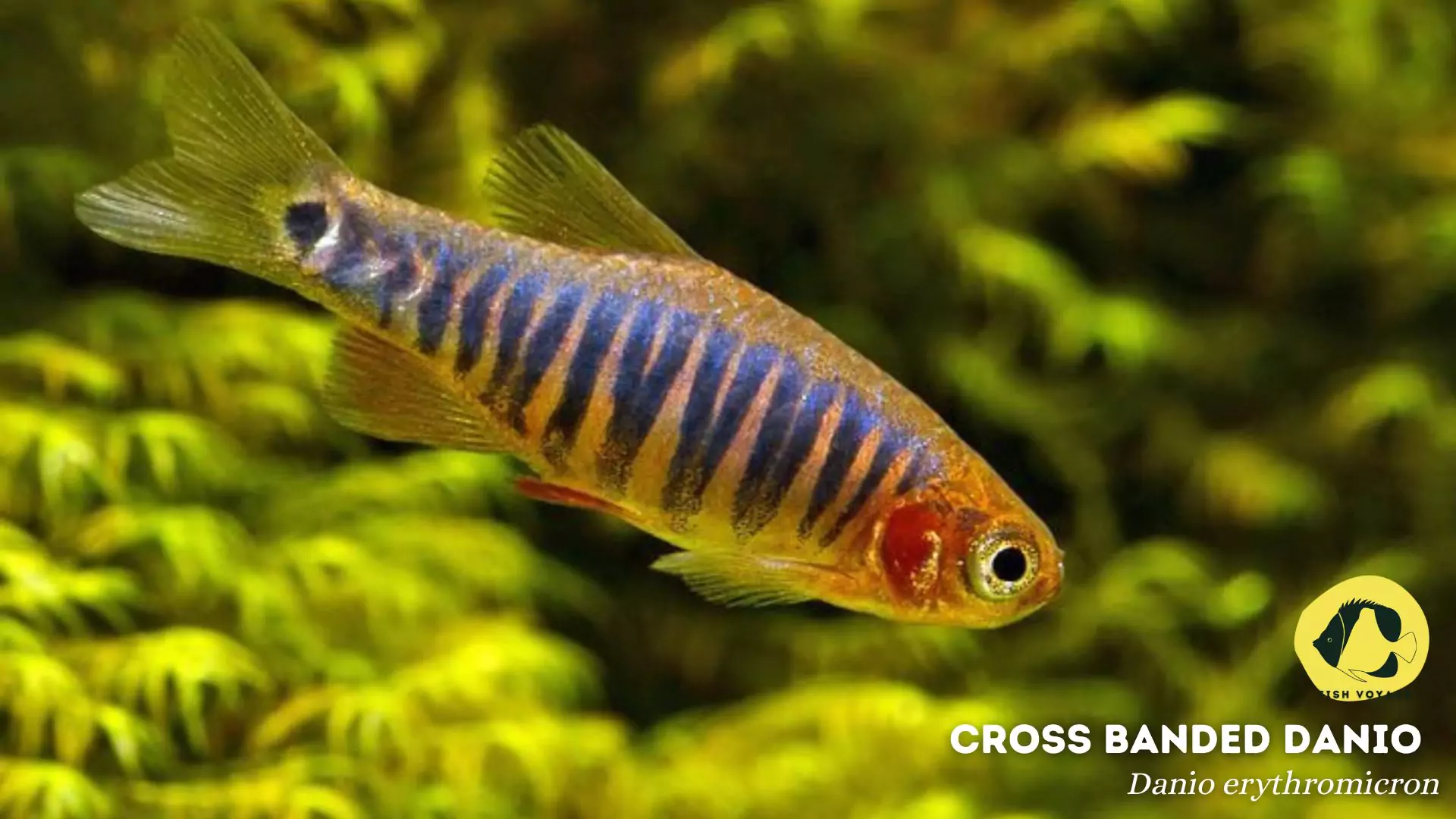
Welcome to our exploration of the captivating aquatic world, where we dive into the realm of Cross Banded Danios and the art of selecting their perfect tank companions. Known for their vibrant colors and lively demeanor, Cross Banded Danios add a touch of elegance to any aquarium. In this guide, we’ll unravel the key traits of these charming fish, emphasizing the significance of harmonious tank communities. Choosing the right tank mates is a delicate task that plays a pivotal role in fostering a thriving aquatic environment.
As we navigate through this blog post, we will shed light on the ideal companions for Cross Banded Danios, ensuring a balanced and serene habitat. Join us on this journey to discover the secrets of successful tank mate selection and witness the beauty of a well-curated aquatic ecosystem.
Characteristics of Cross Banded Danios
Physical Features
- Distinctive Markings: Cross Banded Danios boast eye-catching horizontal stripes across their slender bodies, creating a mesmerizing pattern that distinguishes them in any aquarium.
- Vibrant Coloration: With a palette ranging from shimmering silver to golden hues, these fish bring a burst of color to aquatic landscapes, captivating the attention of both seasoned enthusiasts and novice admirers.
- Forked Tail Fin: One of their signature features, the forked tail fin enhances their agility and contributes to their graceful movement, making them a delight to observe.
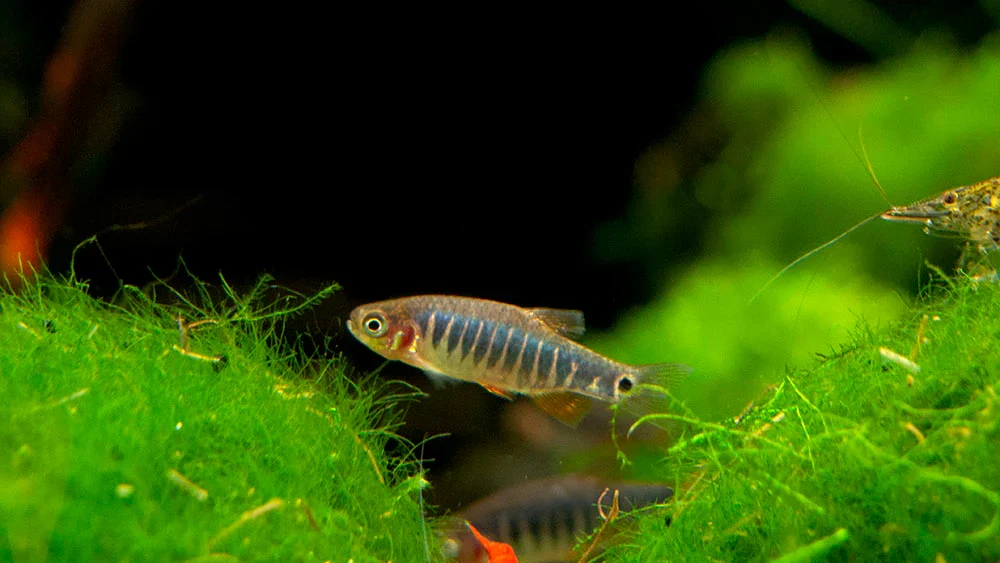
Behavior Traits
- Active Swimmers: Cross Banded Danios are known for their energetic swimming patterns, exploring the entire tank with enthusiasm. Their constant movement adds a dynamic element to the aquarium ambiance.
- Schooling Behavior: These social beings thrive in the company of their own kind, exhibiting a natural inclination to form schools. Providing a group of Cross Banded Danios encourages their social tendencies.
- Playful Nature: Incorporating a sense of playfulness, these danios often engage in chasing and playful interactions, creating an animated and lively underwater spectacle.
Ideal Tank Conditions for Cross Banded Danios
- Water Parameters: Maintain a pH level between 6.5 and 7.5, coupled with a water temperature ranging from 72°F to 78°F (22°C to 26°C), mirroring their native Southeast Asian habitats.
- Tank Size: Offer a spacious tank, considering a minimum of 20 gallons for a small group. The ample swimming space accommodates their active nature and allows them to thrive.
- Aquascape and Lighting: Mimic their natural environment with well-placed plants and subdued lighting. Cross Banded Danios appreciate a combination of open swimming areas and strategically positioned hiding spots.
Importance of Choosing Compatible Tank Mates
- Stress Reduction: Selecting compatible tank mates for your Cross Banded Danios is paramount for maintaining a stress-free environment. Harmonious companionship contributes to the overall well-being of your aquatic community.
- Natural Behavior Expression: Choosing suitable tank mates allows each species, including Cross Banded Danios, to exhibit their natural behaviors without the disruptions caused by aggressive or incompatible companions.
Avoiding Aggressive or Incompatible Species
- Minimizing Aggression: Introducing fish with similar temperaments helps prevent conflicts and territorial disputes, reducing the likelihood of aggression that can lead to injuries or stress among tank inhabitants.
- Researching Compatibility: Thorough research on the behavior, size, and feeding habits of potential tank mates is essential. This aids in avoiding species that may outgrow the tank, compete for resources, or display aggressive tendencies.
Creating a Balanced Ecosystem
- Diverse Species Interaction: Building a balanced ecosystem involves selecting tank mates that complement each other in terms of size, activity levels, and habitat preferences. This diversity fosters a natural and visually appealing aquatic landscape.
- Resource Distribution: Ensuring that tank mates have access to sufficient food, hiding spots, and territories prevents competition and establishes a harmonious coexistence, promoting the long-term health of the entire aquarium community.
Suitable Cross Banded Danio Tank Mates
Neon Tetras
Description of the Fish Species
Neon Tetras, with their vibrant blue and red stripes, are small, schooling fish known for their peaceful nature and active swimming behavior.
Reasons for Compatibility
- Similar Temperature Preferences: Neon Tetras thrive in the temperature range of 70°F to 78°F (21°C to 26°C), aligning seamlessly with the preferred conditions for Cross Banded Danios.
- Omnivorous Diet Compatibility: Both species share a penchant for a varied diet, allowing for easy integration of compatible foods such as high-quality flakes, freeze-dried, and live options.
- Harmonious Size Dynamics: The modest size of Neon Tetras complements Cross Banded Danios, reducing the risk of territorial disputes and promoting a cohesive community.

Corydoras Catfish
Description of the Fish Species
Corydoras Catfish, with their armored appearance, are bottom-dwelling fish that contribute to tank cleanliness by scavenging for leftover food.
Reasons for Compatibility
- Temperature Harmony: Corydoras Catfish thrive in temperatures ranging from 72°F to 78°F (22°C to 26°C), aligning well with the preferences of Cross Banded Danios.
- Similar Dietary Preferences: Both species share a preference for sinking pellets or tablets, promoting a shared food source without competition.
- Peaceful Coexistence: The modest size and peaceful demeanor of Corydoras make them ideal tank mates, fostering a tranquil and harmonious aquatic environment.

Harlequin Rasboras
Description of the Fish Species
Harlequin Rasboras, adorned with vibrant orange and black markings, are peaceful schooling fish that bring color and tranquility to community aquariums.
Reasons for Compatibility
- Temperature Alignment: Harlequin Rasboras prefer temperatures between 72°F to 77°F (22°C to 25°C), making them an excellent match for Cross Banded Danios.
- Dietary Harmony: Similar dietary preferences, including flake food and small live or frozen options, contribute to a hassle-free feeding routine for both species.
- Size Compatibility: Their comparable size ensures a balanced ecosystem, minimizing the likelihood of territorial conflicts and ensuring a peaceful coexistence.
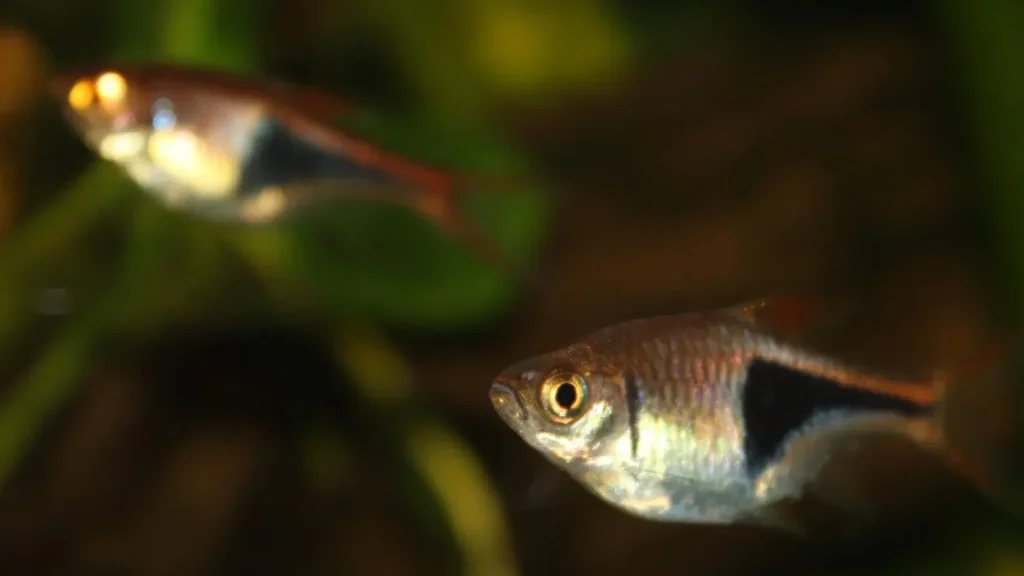
Cherry Barbs
Description of the Fish Species
Cherry Barbs, characterized by vivid red hues, are lively and peaceful community fish that enhance the visual appeal of the aquarium.
Reasons for Compatibility
- Temperature Accord: Thriving in temperatures between 73°F to 81°F (23°C to 27°C), Cherry Barbs complement the Cross Banded Danios’ preferred temperature range.
- Dietary Synergy: Both species share a preference for a varied diet, accommodating a mix of high-quality flakes, pellets, and live or frozen foods.
- Size Harmony: Similar sizes contribute to a balanced and visually appealing tank, reducing the likelihood of territorial conflicts and ensuring a tranquil coexistence.

Zebra Danios
Description of the Fish Species
Zebra Danios, close relatives to Cross Banded Danios, showcase a distinctive striped pattern, adding familiarity and synergy to the aquarium.
Reasons for Compatibility
- Temperature Alignment: Zebra Danios thrive in temperatures ranging from 65°F to 77°F (18°C to 25°C), aligning seamlessly with the Cross Banded Danios’ preferences.
- Omnivorous Feeding Habits: Similar omnivorous feeding habits make it easy to provide a well-balanced diet suitable for both species.
- Size Consistency: Comparable sizes promote a cohesive and visually appealing tank, reducing the likelihood of size-related conflicts.
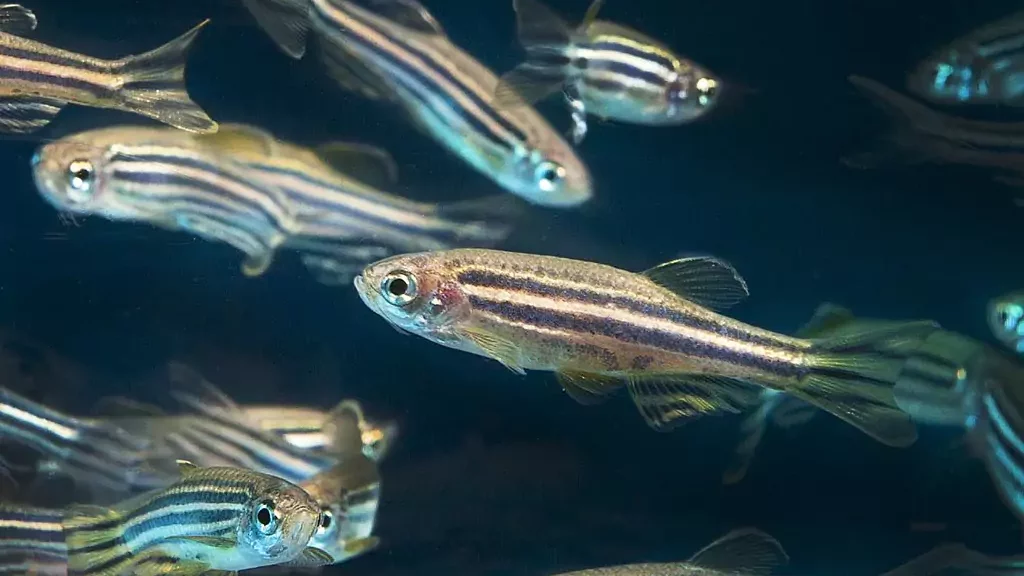
Incompatible Tank Mates to Avoid
Oscar Cichlids
Description of the Fish Species
Oscar Cichlids, renowned for their impressive size and vibrant colors, are large freshwater fish with a charismatic yet territorial demeanor.
Reasons for Incompatibility
- Temperature Discrepancy: Oscars prefer warmer waters ranging from 77°F to 80°F (25°C to 27°C), exceeding the ideal range for Cross Banded Danios, leading to stress and compromised well-being.
- Carnivorous Diet Conflict: Oscars are carnivorous predators with a preference for live or large frozen foods, posing a threat to the smaller Cross Banded Danios and creating an unsuitable feeding dynamic.
- Size Disparity: The substantial size difference between Oscars and Cross Banded Danios increases the risk of predation and territorial disputes, making them incompatible tank mates.
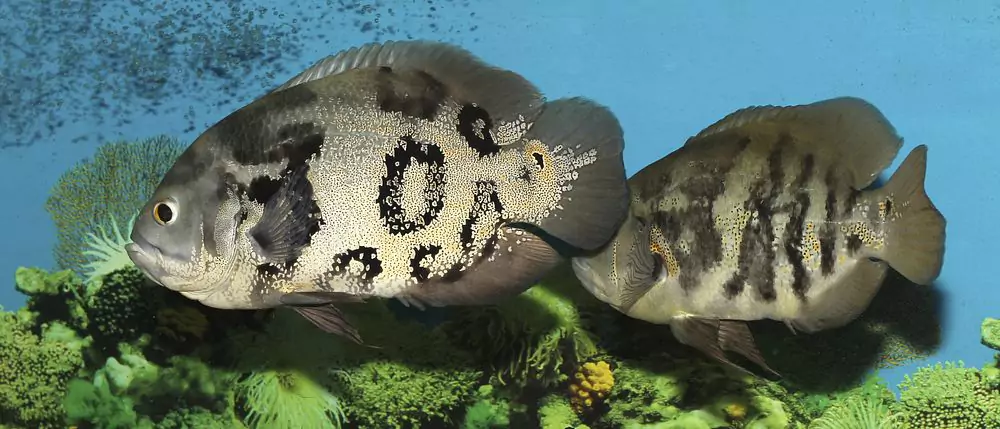
Tiger Barbs
Description of the Fish Species
Tiger Barbs, recognized for their distinctive black stripes and energetic behavior, are small but semi-aggressive freshwater fish.
Reasons for Incompatibility
- Temperature Mismatch: Tiger Barbs prefer slightly higher temperatures between 74°F to 79°F (23°C to 26°C), creating a mismatch with the Cross Banded Danios’ temperature range.
- Fin Nipping Behavior: Tiger Barbs are notorious for being fin nippers, and their semi-aggressive nature can lead to stress and injury for the more delicate Cross Banded Danios.
- Size and Aggression Issues: The size and temperament of Tiger Barbs may lead to bullying and fin nipping, causing harm to the Cross Banded Danios, especially in smaller tanks.
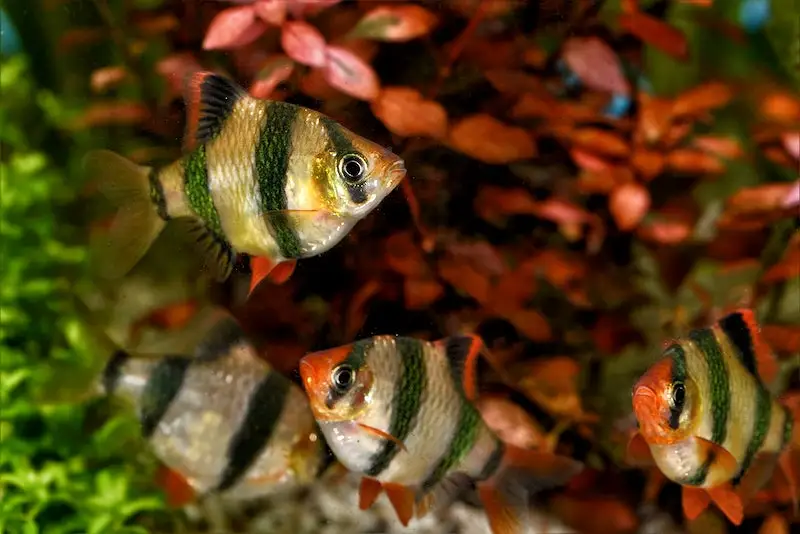
Red-Bellied Piranhas
Description of the Fish Species
Red-Bellied Piranhas, infamous for their sharp teeth and aggressive feeding behavior, are carnivorous freshwater fish.
Reasons for Incompatibility
- Temperature Preference Clash: Piranhas thrive in warmer temperatures between 75°F to 82°F (24°C to 28°C), exceeding the ideal range for Cross Banded Danios.
- Carnivorous Predation Risk: Red-Bellied Piranhas have a strictly carnivorous diet and may view smaller fish like Cross Banded Danios as prey, leading to aggressive behavior and potential harm.
- Size Disparity and Safety Concerns: The significant size difference poses a direct threat to the safety of Cross Banded Danios, making these species incompatible tank mates.

Jack Dempseys
Description of the Fish Species
Jack Dempseys, medium-sized cichlids with distinct patterns and colors, are known for their aggressive territorial behavior.
Reasons for Incompatibility
- Temperature Preference Variation: Jack Dempseys prefer warmer temperatures ranging from 77°F to 82°F (25°C to 28°C), exceeding the ideal range for Cross Banded Danios.
- Carnivorous Diet and Aggression: Their carnivorous diet and territorial behavior can lead to aggression and potential harm to the smaller and more peaceful Cross Banded Danios.
- Size Disparity and Intimidation: Jack Dempseys’ size and aggressive tendencies make them incompatible tank mates, as they may intimidate and harm the Cross Banded Danios.
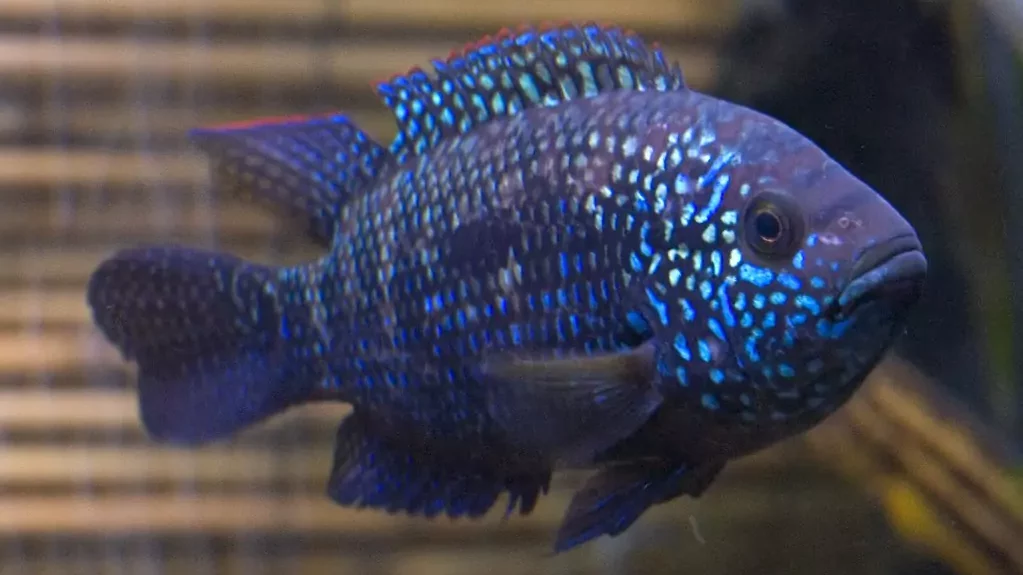
Arowanas
Description of the Fish Species
Arowanas, large predatory fish with elongated bodies and distinctive scales, are often kept in spacious tanks due to their size.
Reasons for Incompatibility
- Temperature Preference Clash: Arowanas prefer warmer temperatures ranging from 75°F to 82°F (24°C to 28°C), creating a mismatch with the Cross Banded Danios’ preferences.
- Carnivorous Predatory Nature: Arowanas are carnivorous predators with a penchant for surface-dwelling prey, posing a significant threat to smaller and more active Cross Banded Danios.
- Substantial Size Difference and Predation Risk: The substantial size difference and predatory nature of Arowanas make them incompatible tank mates, risking the safety of Cross Banded Danios.
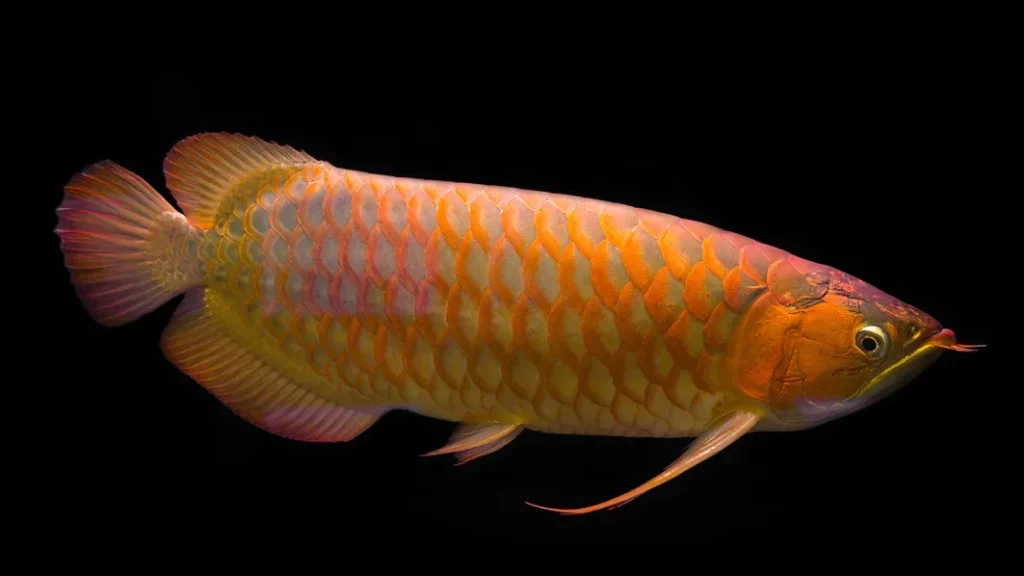
Tips for Introducing Tank Mates
Quarantine Procedures
Purposeful Isolation
Before introducing any new tank mates, implement a quarantine period of at least two weeks. This step helps identify and address potential health issues without exposing the entire aquarium community to the risk of disease.
Health Assessment
During quarantine, closely monitor the health of the new fish. Look for signs of illness such as abnormal behavior, fin clamping, or visible parasites. Treating any health issues in isolation safeguards the well-being of both the new arrivals and existing tank inhabitants.
Monitoring Behavior and Adjusting as Needed
Observation Period
Once the quarantine period concludes, introduce the new tank mates gradually. Observe the interactions between Cross Banded Danios and newcomers, paying attention to any signs of aggression or stress.
Be Prepared to Separate
Have a plan in place to separate fish if aggression or compatibility issues arise. This proactive approach prevents potential harm and allows for swift intervention to maintain a harmonious tank environment.
Adjusting Group Dynamics
If adding multiple new fish, monitor the group dynamics closely. Ensure that the balance within the school of Cross Banded Danios remains stable, and consider adjusting the number of new additions if needed.
Ensuring Adequate Hiding Spots and Territories
Strategic Aquascaping
Create a well-structured aquarium with strategically placed decorations, plants, and hiding spots. This helps establish territories and provides refuge for both Cross Banded Danios and new tank mates.
Consideration of Space
Ensure that the tank size accommodates the needs of all inhabitants. Adequate swimming space, coupled with designated territories, minimizes the risk of territorial disputes and promotes a stress-free coexistence.
Multiple Hiding Options
Provide various hiding spots to cater to different fish personalities. Some species may prefer caves, while others may prefer dense plant cover. This diversity allows each fish to find a comfortable space within the tank.
Conclusion
Recap of Key Points
In conclusion, we’ve delved into the world of Cross Banded Danios and the crucial considerations for selecting compatible tank mates. Understanding the physical characteristics, behavior traits, and ideal tank conditions for Cross Banded Danios lays the foundation for creating a thriving aquatic community.
Encouragement for Responsible Fish Keeping
Responsible fishkeeping is not just a duty but a commitment to the well-being of our aquatic companions. As stewards of these delicate ecosystems, it is our responsibility to provide a suitable environment, promote compatibility among tank mates, and ensure the health and happiness of every finned resident.
Call to Action for Reader Engagement and Comments
We invite you, our valued readers, to share your experiences, insights, and questions in the comments section below. Your engagement fosters a community of knowledge-sharing and supports fellow enthusiasts on their aquatic journeys. Whether you are a seasoned aquarist or a newcomer to the hobby, your perspectives contribute to the collective wisdom that enriches the world of fishkeeping.
As you embark on the adventure of creating a harmonious aquarium, may your tanks be filled with vibrant colors, lively interactions, and a sense of fulfillment derived from responsible and compassionate fishkeeping.
Thank you for joining us on this exploration of Cross Banded Danio tank mates. Until next time, happy fishkeeping!
Additional Resources
Links to Related Forums for Further Information
For a deeper dive into the world of Cross Banded Danios and aquarium community discussions, we recommend exploring reputable forums. Joining these communities opens the door to valuable insights, experiences, and expert advice. Here are a few forums to consider.
- AquariumAdvice: Engage in discussions with a diverse community of aquarists, sharing experiences and seeking advice on Cross Banded Danios and their tank mates.
- Fishlore: Dive into the Fishlore community to exchange ideas, troubleshoot challenges, and connect with fellow enthusiasts passionate about responsible fishkeeping.
- PlantedTank: For those interested in creating lush and vibrant planted aquariums alongside Cross Banded Danios, the Planted Tank Forum offers a wealth of knowledge and inspiration.
Recommended Products for Optimal Tank Conditions
To ensure the well-being of your Cross Banded Danios and their tank mates, consider the following recommended products.
- Aqueon Aquarium Heater: Maintain a stable and suitable temperature for your aquatic community with a reliable aquarium heater. Consistent warmth is crucial for the health of Cross Banded Danios and their companions.
- Hikari Micro Pellets: Provide a balanced and nutritious diet with high-quality fish food. Look for options that cater to the dietary preferences of Cross Banded Danios and their compatible tank mates.
- PietyPet Decorative Aquarium Plants: Enhance the aesthetic and environmental aspects of your tank with live or artificial aquarium plants. These additions offer hiding spots, oxygenation, and a natural feel for the aquatic inhabitants.
- API Water Test Kit: Regularly monitor water parameters to ensure optimal conditions. A reliable water test kit helps you track pH, ammonia, nitrites, and nitrates, promoting a healthy environment for your fish.
- majoywoo Aquarium Decor: Create a visually appealing and enriching habitat with carefully selected aquarium decor. From caves to driftwood, these additions contribute to the well-being and behavioral stimulation of Cross Banded Danios and their tank mates.
Investing in these recommended products supports the longevity and vitality of your aquarium community. Remember to follow product instructions and conduct thorough research before making any additions to your tank.
Frequently Asked Questions (FAQs)
1. What are the ideal tank mates for Cross Banded Danios?
Ideal tank mates for Cross Banded Danios include peaceful community fish such as Neon Tetras, Corydoras Catfish, Harlequin Rasboras, Cherry Barbs, and Zebra Danios. These species share compatible temperaments, diet preferences, and environmental conditions.
2. Can Cross Banded Danios coexist with aggressive fish?
It’s advisable to avoid aggressive tank mates, as Cross Banded Danios are peaceful by nature. Aggressive species, like Oscar Cichlids, Tiger Barbs, Red-Bellied Piranhas, Jack Dempseys, and Arowanas, may lead to stress, injury, and territorial conflicts.
3. How should I introduce new tank mates to Cross Banded Danios?
Introduce new tank mates after a quarantine period, monitoring their behavior closely. Be prepared to separate fish if aggression occurs. Create a well-structured tank with hiding spots to ensure a smooth integration.
4. Can Cross Banded Danios be kept with different-sized tank mates?
While Cross Banded Danios are generally peaceful, size considerations are crucial. It’s recommended to avoid significant size disparities to prevent predation or territorial disputes. Choose tank mates of similar size for a harmonious community.
5. What products enhance the well-being of Cross Banded Danios and their tank mates?
Essential products include an aquarium heater for temperature control, quality fish food for a balanced diet, decorative aquarium plants for enrichment, a water test kit for parameter monitoring, and aquarium decor for a visually appealing habitat.

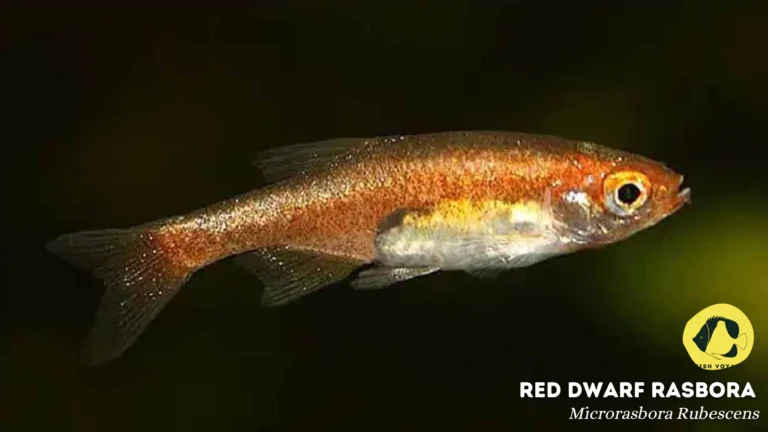
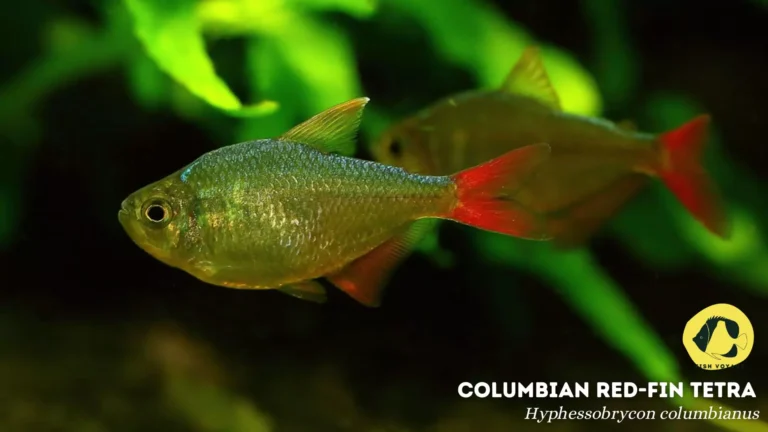
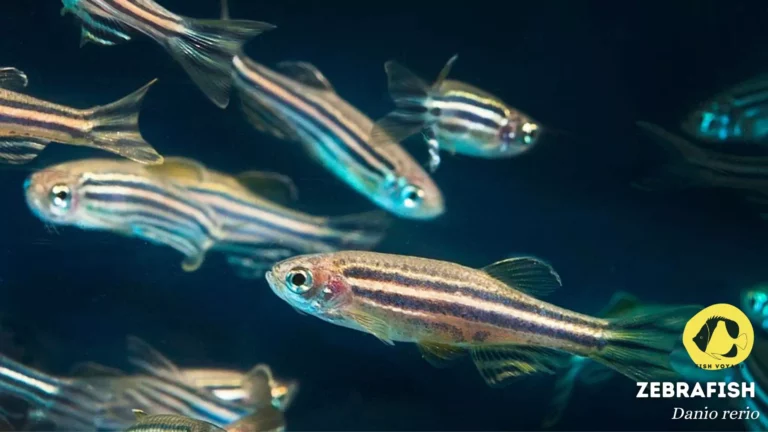


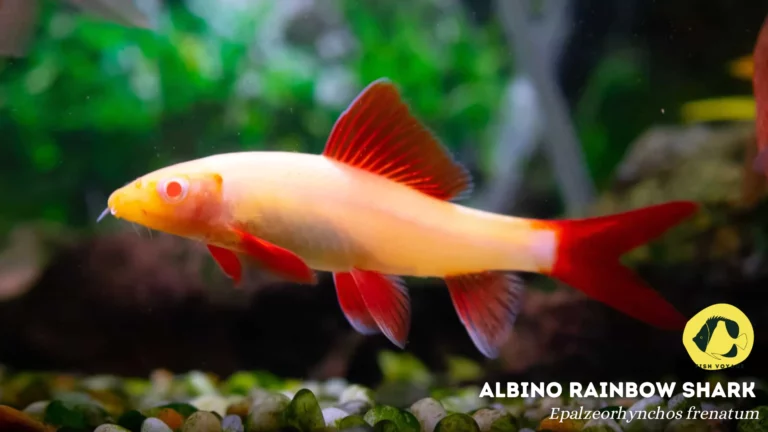
Your blog’s layout is absolutely stunning. How long have you been blogging? You make it appear effortless. Both the appearance and the content of your site are excellent.
Thank you so much for your kind words! We’ve been in the blogging business for 6-7 years now, but FishVoyage is now a 4-month-old blog. We’re thrilled to hear that you find both the appearance and content of our site excellent. We’ve put a lot of effort into crafting a visually appealing layout and ensuring our content is valuable to our readers. Your feedback truly means a lot to us, and we’re glad to have you as part of our community. Stay tuned for more great content!